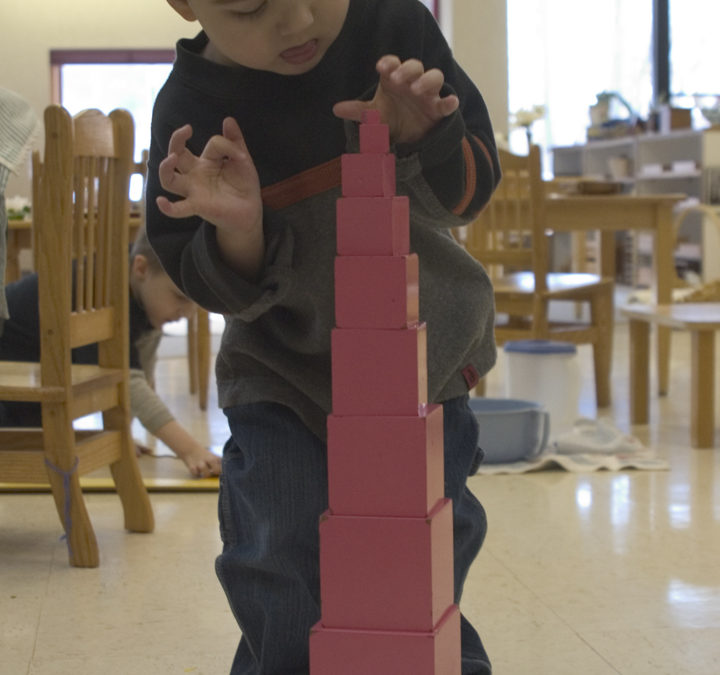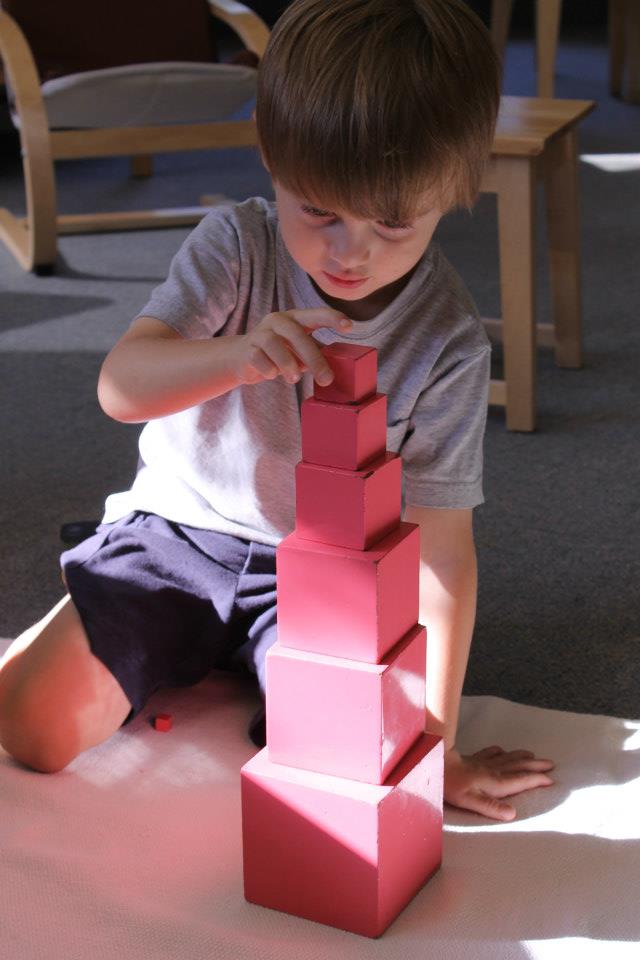
This Material’s Purpose: the Pink Tower and the Brown Stair
There were many reasons why we learned how to use and put together the Pink Tower when we were in Children’s House. It is sensorial work, which helped us classify what was around us, ultimately helping us with organization and adaptation to our environment. It showed us the difference between something large (the bottom blocks), and small (the top blocks), and also to learn the language of comparison. It helped us with motor skills and hand-eye coordination, and it even planted the seeds for mathematics lessons that we would learn later. The smallest block is 1cm cubed and they get larger by 1cm cubed up to the largest block which is 10cm cubed. This helped us spatially see the mathematical relationship of the blocks.
The Brown Stair was also taught to us for many of the same reasons as the Pink Tower. Each of the ‘stairs’ or the rectangular blocks called ‘prisms’ are 20cm long, but the heights grow incrementally larger with the smallest stair’s height being 1cm by 1cm, and increasing in size to 10cm by 10cm. These materials helped us to understand thickness and recognize the differences in weight between the sizes. Like the Pink Tower, the Brown Stair helped us see relationship and a visual understanding of objects getting incrementally thinner and thicker. Another purpose for these two martials is called “materialized abstractions” – the sensorial materials help bring concepts that were abstract into the concrete.
Something very important to Dr. Montessori was that all of the materials handled by children were aesthetically pleasing. It was important because the materials needed to be desirable by us so we would want to touch them and learn more about them. As children, we needed to be able to feel and hold things to get a better understanding of them so all of the sensorial materials were of quality materials, pleasing to the eye and touch, and easy to manipulate. Dr. Montessori said, “He does it with his hands, by experience, first in play and then through work. The hands are the instruments of man’s intelligence.”
Is there a Montessori material you’d like to learn more about? Please comment below or email me at mwebster@hershey-montessori.org.
Thank you for reading!
Makella Webster, Hershey Montessori School Alumni Coordinator


